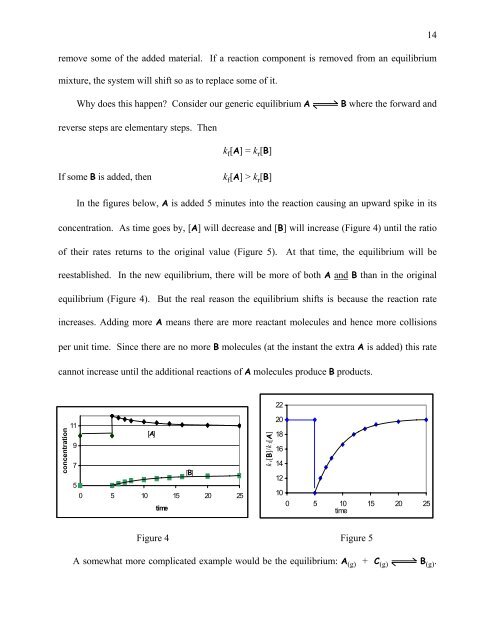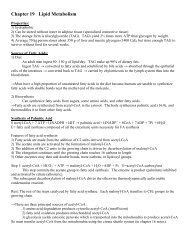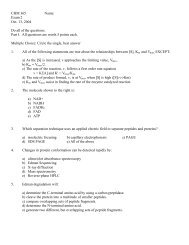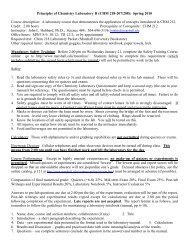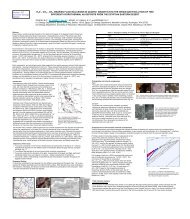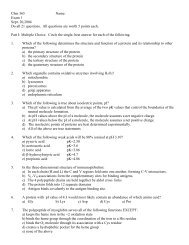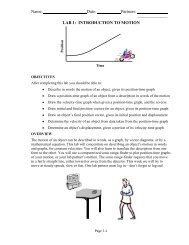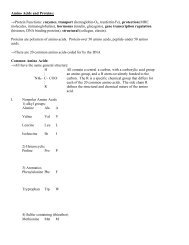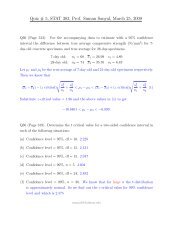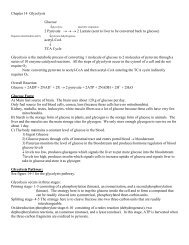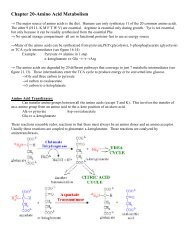Chapter 15 – Chemical Equilibrium
Chapter 15 – Chemical Equilibrium
Chapter 15 – Chemical Equilibrium
Create successful ePaper yourself
Turn your PDF publications into a flip-book with our unique Google optimized e-Paper software.
emove some of the added material. If a reaction component is removed from an equilibrium<br />
mixture, the system will shift so as to replace some of it.<br />
14<br />
Why does this happen Consider our generic equilibrium A<br />
B where the forward and<br />
reverse steps are elementary steps. Then<br />
k f [A] = k r [B]<br />
If some B is added, then<br />
k f [A] > k r [B]<br />
In the figures below, A is added 5 minutes into the reaction causing an upward spike in its<br />
concentration. As time goes by, [A] will decrease and [B] will increase (Figure 4) until the ratio<br />
of their rates returns to the original value (Figure 5). At that time, the equilibrium will be<br />
reestablished. In the new equilibrium, there will be more of both A and B than in the original<br />
equilibrium (Figure 4). But the real reason the equilibrium shifts is because the reaction rate<br />
increases. Adding more A means there are more reactant molecules and hence more collisions<br />
per unit time. Since there are no more B molecules (at the instant the extra A is added) this rate<br />
cannot increase until the additional reactions of A molecules produce B products.<br />
22<br />
concentration<br />
11<br />
[A]<br />
9<br />
7<br />
[B]<br />
5<br />
0 5 10 <strong>15</strong> 20 25<br />
time<br />
k r[B]/k f[A]<br />
20<br />
18<br />
16<br />
14<br />
12<br />
10<br />
0 5 10 <strong>15</strong> 20 25<br />
time<br />
Figure 4 Figure 5<br />
A somewhat more complicated example would be the equilibrium: A (g) + C (g) B (g) .


